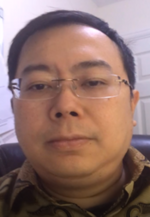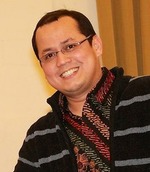Role and Value of Smart Electric Vehicles: Studies in Great Britain
Dr. Danny Pudjianto
Institution
Department of Electrical and Electronic Engineering, Imperial College London
Research Field
Power System Engineering
Abstract
Decarbonisation of transport sector through electrification requires a holistic and coordinated approach to maximise the synergy with the radical changes happening in the power sector where variable renewables and other low-carbon technologies will become the main energy sources in future. Transport electrification will increase electricity peak demand more substantially than the increase in energy demand. However, smart control of electric vehicles (EV) provides opportunities to minimise the system cost of integrating EV and improve the system flexibility to accommodate low-cost low-carbon energy sources. In this context, the talk will provide key lesson learnt from various studies in Great Britain analysing the impact of transport electrification on the electricity infrastructure requirements and the potential savings that can be achieved by having smart EV that can shift the EV loads and provide system balancing.
Biography
Dr Danny Pudjianto is a Research Fellow at Imperial College London. He holds bachelor degrees in Economics from Open University, Indonesia and Electronics from Institute Technology Sepuluh Nopember Surabaya, and MSc. and PhD. Degree in Power System Engineering in 1999 and 2003 from the University of Manchester Institute of Science and Technology. His research work is in the area of power system modelling and optimisation, power system economics, regulation, strategic planning and system operation, system security, renewable integration, integrated multi-energy systems, and smart technology evaluations. He is a senior member of IEEE, a member of IET and the editorial board of Renewable Energy journal and has published more than 90 technical papers and 70 industrial/research reports.
ISITIA 2021 Keynote Speakers
System Telemedicine as key aspect in Pandemic Era for Health Care Improvement: A case study of Subject-specific Stroke Rehabilitation system in the new era
Dr. Adhi Dharma Wibawa
Institution
Sepuluh Nopember Institute of Technology
Research Field
Image Processing, Biomechanics, Artificial Intelligence
Abstract
In the pandemic era like nowadays, many scientists and researchers predicted that the world will still suffer from Covid-19 Pandemic until the next 3 years. Social distancing is one of the key success in preventing the virus to spread. However, when we look at the healthcare services, some patients even will suffer more when they can not visit the hospital physically. This pandemic Covid-19 really creates a confusing condition for patients. Implementing social distancing can be a good way for the patients to be infected by the Covid-19, however their other accute illness such as stroke that need specific rehabilitation program from the hospital can grow into worse condition. Due to those difficult situations, an alternative method needs to be developed to overcome this such problem, especially for stroke patient rehabilitation. This study presents an alternative way in performing stroke patient rehabilitation program that can be done by the patients from home without any contact with other people other than his/her family members. EEG as electroencephalogram has become a famous sensor for brain signal among scientist since in the beginning of 20th century. EEG sensor records the electrical activity of the brain during many human activities. Since motion is also controlled and monitored by the human brain, many studies showed that EEG is actually can be used as a window view to understand what is going on in the stroke patient’s brain during motion. The nature of stroke attack in the brain is due to blood vessels that bursts that causing bleeidng in the human brain. This bleeding then causes a blocking system for the nerve system to work. This condition, at some certain level then can trigger human control disruption over motion. EEG as the best representative of electrical signal of the human brain, can be used to show how the central nervous system is disturbed due to the bleeding. By understanding which important parameters of EEG signal that can be used to monitor the performance during stroke patient motion, online and subject-specific stroke rehabilitation program then can be made possible to be done at home, with still keeping the patient for doing the social distancing.
Biography
Dr. Adhi Dharma Wibawa, finished his bachelor study from Electrical Engineering, Institut Teknologi Sepuluh (ITS), Surabaya in 2000, majoring in Telecommunication. He then continued his Master degree in Intelligent Network Multimedia, Electrical Engineering, Institut Teknologi Sepuluh (ITS), Surabaya, and graduated in 2006. During his master degree, he focused his research on image processing and artificial intelligence. Starting 2007, he works as a lecturer in PENS-ITS (Politeknik Elektronika Negeri Surabaya) until 2008. He then continues his career as a lecturer in ITS since 2008. Several researches in biomedical engineering have been done in the field of image processing, signal processing and artificial intelligence since he has worked as e lecturer. In 2009, he started his PhD study in the University of Groningen, the Netherlands, majoring in Biomechanics analysis and modeling. He finished his PhD study in 2014. Since 2014, he returned to ITS and continue his career as lecturer and researcher in ITS. His main research focus is on biomedical signal processing and artificial intelligence applications.
ISITIA 2021 Keynote Speakers
Self-Injection-locked ultrasonic radar for non-contact monitoring of respiration and heartbeat
Prof. Shiang-Hwua Yu
Institution
National Sun Yat-sen University
Research Field
Relay feedback oscillation and its applications on control, detection, and modulation
Abstract
This talk will give you the why and the how to utilize the injection locking technique to build an extremely sensitive ultrasonic radar. The core of the radar is a relay feedback oscillator, for generating a carrier signal for an ultrasonic transmitter, and is injected with the returned echo signal sensed by an ultrasonic receiver. As a result of injection, the frequency and amplitude of the oscillator vary with the Doppler phase shift induced by the motion of the target. A novel phase-canceling feedback controller is used to demodulate the target’s displacement from the Doppler phase shift of the echo signal. Due to the feedback modulation, the radar is highly linear and insensitive to the circuit imperfections. We demonstrate the radar’s high sensitivity and linearity by using it to detect the weak breathing and heartbeat rhythms form the chest movement.
Biography
Shiang-Hwua Yu received the M.S. and Ph.D. degrees in control engineering from National Chiao Tung University, Hsinchu, Taiwan, in 1995 and 2001, respectively. In 2004, he joined the faculty of National Sun Yat-sen University, Kaohsiung, Taiwan, where he is currently an Associate Professor of electrical engineering. His research focuses on relay feedback oscillation and its applications on control, detection, and modulation.
ISITIA 2021 Keynote Speakers
 Trends in MW Front-End Technologies
Trends in MW Front-End Technologies
Prof. Wolfgang Bösch
Institution
Graz University of Technology
Research Field
Microwave integrated circuits, Radio Frequency (RF) circuit and system design, Antennas and beam forming networks
Abstract
Whether smart homes or smart grids, whether healthcare, autonomous driving or space travel, 500 billion devices are expected to be connected to the internet and to communicate wirelessly by 2030. The global transmission data rates are still growing exponentially. For a secure and robust data transmission, ever more transmit and receive capabilities need to be installed in a limited space with reduced power consumption, quite often multiple radios in the same communication device. This leads to requirements for higher frequency of operation, higher integration and a necessary miniaturization of all electronic components. This talk will first address the application space of 5G and the resulting technological challenges specifically for future microwave front-end devices. The optimum semiconductor mix and the predicted market growth will briefly be presented, followed by some examples of emerging front-end technologies to address the forthcoming challenges. Specifically, the size and the performance of passive components plays in important role. Individual passive components often have to perform several functions simultaneously, such as antennas with integrated filtering function (so-called “filtennas”). Some examples of innovative antenna and filter design will be given. Additive manufacturing is another good example how complex and innovative functionality can be achieved by novel designs. Finally an all-digital Front-End design will be presented.
Biography
In March 2010 Professor Dr. Wolfgang Bösch has joined Graz University of Technology in Austria to establish a new Institute for Microwave and Photonic Engineering. Today he is the Dean of the Faculty of Electrical and Information Engineering, which currently incorporates 13 Institutes and 18 Full-Professors. His Institute has more than 45 researchers, in average 60 publications per year and a research project turnover of €1.7 million per year.
Prior he has been the CTO of the Advanced Digital Institute in the UK, a not for profit organisation to promote research activities. Earlier he served as the Director of Business and Technology Integration for RFMD UK and for almost 10 years he has been with Filtronic plc as CTO of Filtronic Integrated Products and the Director of the Global Technology Group. Before joining Filtronic, he has held positions at the European Space Agency (ESA) working on amplifier linearization techniques, MPR-Teltech in Canada working on MMIC technology projects and the Corporate R&D group of M/A-COM in Boston, USA where he worked on advanced topologies for high efficiency power amplifiers. For four years he was with DaimlerChrysler Aerospace (now Airbus) in Germany working on T/R Modules for airborne radar.
Professor Bösch received his engineering degrees from the Technical University of Vienna and Graz in Austria. He finalised his MBA with distinction at Bradford University School of Management in 2004. He is a Fellow of the IEEE and a Fellow of the IET. He published more than 150 papers and holds 4 patents.
1 January 2021
Paper Submission Page Open
15 April 2021 (Extended)
Paper Submission Due
15 May 2021
Acceptance Notification
22 June 2021
Registration Due
3 June 2021
Camera Ready Due
3 July 2021
Video Presentation Due
21-22 July 2021
Conference Date
1 January 2021
Paper Submission Page Open
15 April 2021 (Extended)
Paper Submission Due
15 May 2021
Acceptance Notification
22 June 2021
Registration Due
3 June 2021
Camera Ready Due
3 July 2021
Video Presentation Due
21-22 July 2021
Conference Date
This site uses cookies. Find out more about cookies and how you can refuse them.



